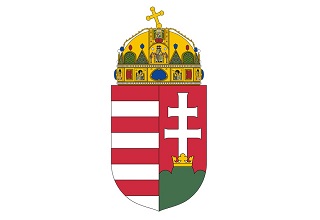Regarding the Inspection and Quarantine Requirements for the Pork from Netherlands to China
1. Basis for inspection and quarantine
(1) Laws and regulations.
The Food Safety Law of the People's Republic of China and its implementing regulations, the Law of the People's Republic of China on the Quarantine of Animals and Plants Entering and Leaving China and its implementing regulations, the Law of the People's Republic of China on the Inspection of Import and Export Commodities and its implementing regulations, the Special Provisions of the State Council on Strengthening the Safety Supervision and Administration of Food and Other Products, as well as the Measures of the People's Republic of China on the Administration of Import and Export Food Safety, and the Regulations of the People's Republic of China on the Registration and Administration of Overseas Manufacturers of Imported Food, etc.
(2) Bilateral protocols.
Protocol between the General Administration of Customs of the People's Republic of China and the Ministry of Agriculture, Nature and Food Quality of the Netherlands on Inspection, Quarantine and Sanitary Requirements for Pork Imported from China from the Netherlands (hereinafter referred to as the "Protocol").
2. Imported products are allowed
Pork allowed to be imported refers to frozen or chilled (boneless and bone-in) pork.
Edible pig by-products allowed to be imported include:
(1) Pig offal: frozen pig heart, frozen pig liver, frozen pig kidney, frozen pork belly;
(2) Other by-products: frozen pig's trotters (whole hooves)/frozen pig's feet rings, frozen pig's tails, unrefined pig fat (excluding fat around internal organs);
(3) Other pig offal: frozen pig head [including frozen pig brain, frozen pig upper jaw, frozen pig lower jaw, frozen pig tongue, frozen pig ear (excluding inner ear), frozen pig nose, frozen pig face], frozen pig heart tube, frozen pig esophagus, frozen pig trachea, frozen pig cartilage, frozen pig bone, frozen pig testicles, frozen pig penis, frozen pig skin, frozen pig diaphragm.
3. Requirements of production enterprises
Pork exporters (including slaughtering, segmenting, processing and storage enterprises) should be located in the Netherlands, under the supervision of the Dutch Ministry of Agriculture, Nature and Food Quality, and in compliance with the requirements of the relevant veterinary health and public health laws and regulations of the European Union, the Netherlands and China.
Pork enterprises exporting to China shall be registered with GACC, and pork produced by enterprises approved for registration can only be exported to China after the date of registration. Meat enterprises that are not registered in China are not allowed to export pork to China.
4. Inspection and quarantine requirements
4.1 Management of animal diseases.
(1) There is no African swine fever, swine vesicular disease and Nipah disease in the Netherlands.
(2) The Netherlands is recognized by the World Organisation for Animal Health (WOAH) as a non-immunized country for foot-and-mouth disease and a country free of swine fever.
4.2 For slaughtering live pigs should meet the conditions.
(1) Born, raised and slaughtered in the Netherlands, with an identity and traced back to the farm from which it came from.
(2) From farms that have not had clinical cases of anthrax, tuberculosis, pseudorabies, brucellosis, paratuberculosis, porcine reproductive and respiratory syndrome and porcine infectious gastroenteritis within 6 months prior to slaughter, and farms that have not been infected with trichinosis and echinococcosis.
(3) The animal has not been vaccinated against live anthrax for at least 14 days prior to slaughter.
(4) From farms/establishments that have not been subject to quarantine monitoring or movement restrictions due to other notifiable swine diseases not mentioned in the above clauses of the China, EU and WOAH regulations within 6 months prior to slaughter.
4.3 Processing process requirements.
4.3.1 Slaughtered live pigs for pork export to China:
(1) Enterprises registered in China are slaughtered, divided, processed and stored, with an identity that can be traced back to the farm from which they originated.
(2) Sourced from farms that comply with the provisions of the Protocol.
(3) Never used veterinary drugs or feed additives that are jointly or separately prohibited by both parties.
(4) In accordance with the relevant laws and regulations of China and the Netherlands, pre-slaughter and post-mortem inspections are carried out on slaughtering pigs used for the production of pork exported to China, and the results are qualified.
(5) Detection of Trichinella using artificial digestion or other methods recognized by both China and the Netherlands, with a negative result, or from a duly recognized Trichinella disease-free farm in the Netherlands in accordance with the procedure set out in Chapter II of Annex IV of the European Union No. 2075/2005.
(6) All slaughtered live pigs are healthy, without any clinical signs of infectious diseases, no pathological changes in carcasses and organs, and major lymph nodes and glandular tissues have been removed.
4.3.2 Implement the Dutch National Residue Monitoring Program for pork exported to China, and certify that the residues of veterinary drugs, pesticides, heavy metals, persistent organic pollutants (POPs) and other toxic and harmful substances in the products do not exceed the maximum residue limits set by China, the Netherlands and the European Union.
4.3.3 Pork exported to China implements the Dutch national microbial monitoring plan, is not contaminated with pathogenic microorganisms, and meets the requirements of laws and regulations of China, the Netherlands and the European Union.
4.3.4 During the epidemic period of major public health epidemics, enterprises shall formulate necessary safety prevention and control measures in accordance with relevant international regulations and standards to ensure that pork is not cross-contaminated in the whole process of receiving, processing, packaging, storing and transporting raw materials.
4.3.5 The product is hygienic, safe and suitable for human consumption.
4.3.6 Edible pig by-products exported to China shall also meet other processing hygiene requirements stipulated in the Protocol.
4.4 Storage requirements.
In the cold storage or cold storage where pork is stored, there should be a special area for storing pork exported to China and clearly marked.
5. Certificate requirements
Each container of pork exported to China should be accompanied by at least one official original veterinary health certificate, which proves that the batch of products complies with the veterinary and public health laws and regulations of China, the Netherlands and the European Union and the relevant provisions of the Protocol.
The veterinary health certificate should be printed or written in Chinese or English (English is required when filling in), and the format and content (statement) of the veterinary health certificate should be approved by both parties in advance.
The Netherlands shall provide the official inspection and quarantine/control seal and marking, a sample of the health certificate, the list of authorized veterinarians with the corresponding signature, the description of the anti-counterfeiting mark, the name of the email address for sending the electronic certificate or the electronic health certificate system to China for filing (if applicable). If the electronic information of the certificate is sent, it shall be sent to China Customs through the channels designated by China within 48 hours after the certificate is issued. If there is any change or change, China will be notified at least one month in advance.
The Netherlands should send electronic information on the issued veterinary health certificate to China through official channels in a timely manner so that China can verify it at the time of import, and the Netherlands should ensure that the electronic information is secure and accurate.
6. Packaging, storage, transportation and labeling requirements
Pork exported to China should be packaged with food contact materials that meet China's national food safety standards and EU and Dutch standards. Pork exported to China should have a separate inner packaging, and the inner packaging should be marked in Chinese and English or Chinese and Dutch with the product name, country of origin, production enterprise registration number and production batch number. The outer packaging should be marked in Chinese and English or Chinese and Dutch with the country of origin, product name, specification, place of origin (specific to the state/province/city), production enterprise registration number, production batch number, destination (should be the People's Republic of China), production date (year/month/day), shelf life, storage temperature, etc., and add the official inspection and quarantine mark of the Netherlands approved by China. Pre-packaged pork should also meet the requirements of China's laws, regulations, and standards regarding the labeling of pre-packaged foods.
The whole process of pork exported to China from packaging, storage to transportation should comply with the relevant health requirements of China, the European Union and the Netherlands to prevent contamination by pathogenic microorganisms and toxic and harmful substances. The storage and transportation of pork should be carried out under the corresponding temperature conditions, the core temperature of frozen pork products should not be higher than minus 15°C, and the core temperature of chilled pork should be between 0°C and 4°C.
After the goods are loaded into the container, they are sealed under the supervision of the official Dutch veterinarian before transportation, and the seal number should be indicated in the veterinary health certificate. The packaging shall not be opened or changed during transportation.
GACC
May 13, 2024




